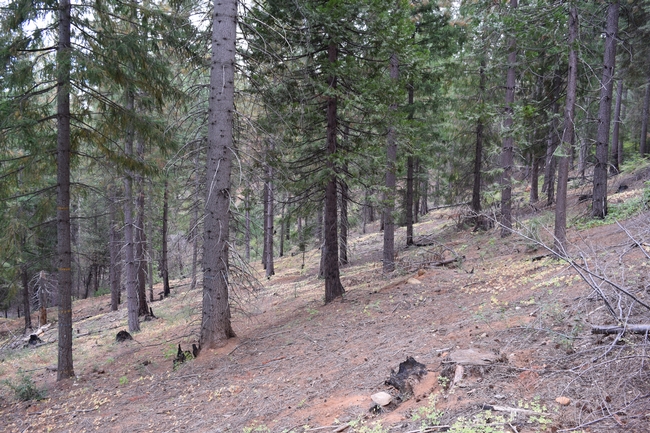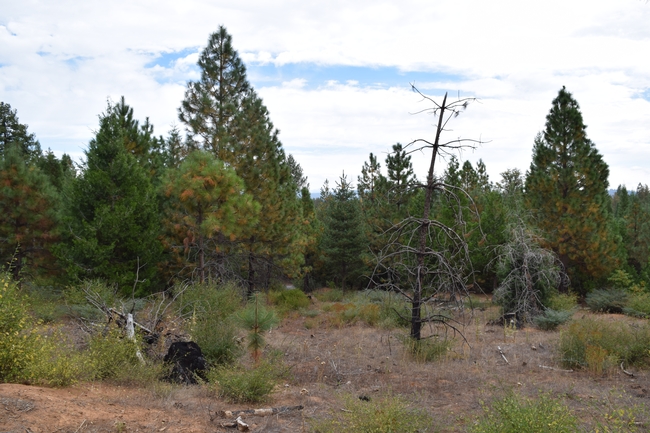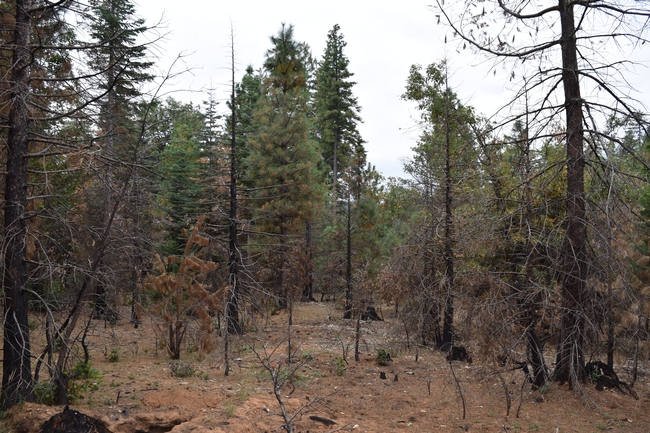California's forests have long been adapted to fire, where the presence of regular, low-severity fires helped maintain forest health. After decades of fire suppression, many private forest landowners are interested in reintroducing fire to their landscape through prescribed burns. When planning for a prescribed fire, landowners must consider a variety of factors, including the age of their trees.
A new study from Hunter Noble (University of Nevada, Reno) and Rob York (UCCE) sheds insight on how prescribed fire affects stands of varying ages. The 2024 paper is a continuation of research conducted at Blodgett Forest Research Station following a 2018 prescribed burn. The new findings provide crucial information for Sierra Mixed-Conifer (SMC) land managers who seek to implement prescribed fire in young forests.
For the tree species in the SMC forest type (Douglas fir, ponderosa pine, sugar pine, incense cedar, white fir and giant sequoia), low-severity fire is a natural part of the ecological process. Reintroducing fire to young, reforested SMC stands can help protect areas burned by high-severity fires from future “reburn” fires by reducing fuel. This study seeks to help answer the question: what is the earliest age you can burn a stand of trees?
In this study, tree mortality rates among 12, 22, and 32-year old stands at UC Berkeley's Blodgett Research Station were observed two years post-burn. There is little known about the effects of prescribed fire on young trees, as prescribed burns are often used to treat older trees with more fire-resistant characteristics. However, understanding when fire can be reintroduced to young stands is critical for those in California managing reforested, post-wildfire landscapes.
When surveying trees in each age class, researchers found that the 32-year old stands experienced the lowest rate of tree mortality (78% of trees survived), whereas the 12-year old stands experienced the highest (31% of trees survived). The 22-year old trees had a 63% survival rate.
An important consideration is that burn conditions may have greatly contributed to the recorded high mortality rate among the 12-year stands. The 2018 burn was conducted at the end of the burn prescription, meaning conditions were hotter and drier than is typical. York and Noble described these mortality results as a “worst case scenario”, referencing a previous study that described a 0-24% mortality rate for a similarly aged stand. However, the authors note that a high mortality rate may not necessarily be undesirable if one's management goal is to create a “low-density, high-complexity stand...similar to historic conditions.”
For those managing post-fire landscapes, utilizing prescribed fire is beneficial towards preventing reburns and can work in harmony with reforestation treatments. However, as outlined in the study, burning under different conditions can significantly affect tree mortality, yielding higher or lower rates. York and Noble conclude that when land managers seek to implement prescribed fire, identifying an acceptable level of tree mortality is key, and burning under the right conditions can lessen fuel loads without sacrificing tree survival in the years to come.
Read the full article here: https://doi.org/10.3733/001c.117485


